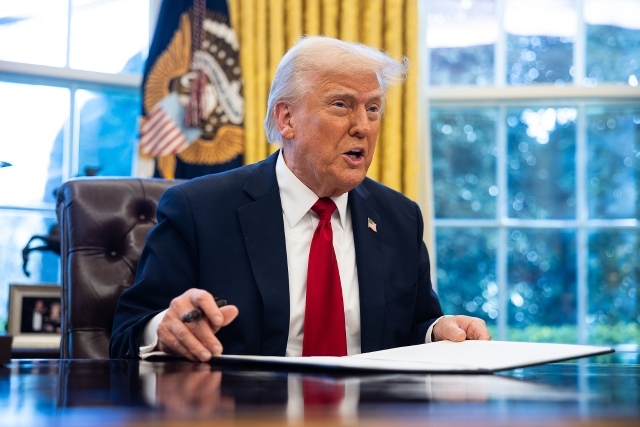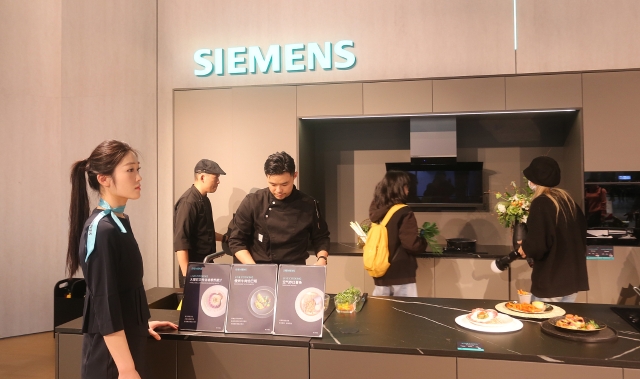
Sub-forum of BFA 2025 Annual Conference "Building an Open World Economy: Challenges and Solutions" is held in Hainan on Mar 27, 2025. (Photo: CFP)
CEOs of multinationals, former officials of foreign governments along with prestigious scholars worldwide flock to the four-day Boao Forum for inclusive global development in Hainan Province from March 25 to 28.
Simultaneously, across the Pacific Ocean, U.S. President Donald Trump on March 26 has imposed a 25% tariff on imported passenger vehicles such as SUVs, cargo vans, and light trucks, as well as key imported automobile parts to the U.S.
From the 1990s to the dawn of the 21st century, hyper-globalization throughout the world, thanks to the neoliberal policies since the 1970s, has witnessed a dramatic change in the size, scope, and velocity of globalization. Nonetheless, after the 2008-2009 global financial crisis, questions and doubts about hyper-globalization linger in Western politicians' and economists' minds.
Dani Rodrik, professor of International Political Economy at Harvard's John F. Kennedy School of Government, claimed the trilemma of the world economy in the 2010s. Namely, the degree of globalization, national sovereignty, and mass politics could not coexist. Societies would eventually settle on at most two out of three.
The ensuing Donald Trump's election as the U.S. President in 2016, the Yellow Vest movement in France in 2018, Brexit in 2020, and Trump's re-election as the U.S. President in 2024, fueled by rising populism in the U.S. and Europe, seem to underpin Rodrik's statement.

US President Donald Trump signs an Executive Order imposing a 25% tariff on imports of automobiles and certain automobile parts in the Oval Office of the White House on Mar. 26, 2025. (Photo: CFP)
Emerging markets and developing economies (EMDEs) such as China, however, have benefited from globalization much due to foreign investments by multinational firms, surging exported goods volumes to the world, and knowledge transfers needed to upgrade sectors domestically.
Based on data from the Ministry of Commerce, from January to February this year, 7,574 new foreign-invested enterprises were established in China, a year-on-year increase of 5.8%. From the view of sectors, the actual use of foreign capital in e-commerce services, bio-pharmaceutical manufacturing, and smart consumer equipment manufacturing increased by 33.5%, 22.9%, and 40.7%, respectively.
From the view of source, the actual investment in China by the UK, Germany, and South Korea increased by 87.9%, 54.7%, and 45.2%, respectively. These latest data illustrate multinationals' continued interest in the hub of world manufacturing.
Huang Qifan, former mayor of Chongqing, highlighted Chinese manufacturing at the Boao Forum, noting that it is not making a cart behind closed doors. He pointed out that the scale of foreign investment attracted by China in the past decade has doubled compared with the previous decade. Its contribution to employment, taxation, and exports, especially capital-intensive and high value-added exports, has increased.
As the world's largest manufacturing country at present, China accounted for 28% of the global manufacturing industry last year. China's manufacturing industry chain system has been confirmed by the United Nations as the only country covering over 600 large, medium, and small industrial chain types in the world, of which 40% of the categories rank first in the world.

The smart kitchen in the exhibition area of Siemens at the China Home Appliances and Consumer Electronics Expo in Shanghai on Mar. 20, 2025. (Photo: CFP)
Facing the risk of deglobalization led by Trump's administration, China has dedicated itself to implementing an inclusive and sustainable roadmap to globalization.
First of all, China positively engages with free trade agreements for collaboration with partner countries. Since the Regional Comprehensive Economic Partnership (RCEP) came into force in November 2020, the pact has further lowered tariffs on intermediate goods within key Asian economies.
In a report unveiled at the Boao Forum, thorough analysis of the trade volume of the world’s most traded 22 intermediate goods shows that half of these products are most reliant on Asia. China's trade in services exceeded $1 trillion, and emerging ASEAN economies, including Laos and Cambodia, experienced substantial growth in service trade in 2024.
Additionally, China has applied for the accession of the Digital Economy Partnership Agreement (DEPA) in November 2021. This first-ever digital-only trade agreement worldwide prepares for the future growth of the digital economy, hailed as the oil of the 21st century, including standards, adoption, and cross-border deployment with the support of the latest technologies.
Second, regarding the climate conundrum, China has devoted itself to developing renewable energies during the last decade. The Global Energy Review 2025 by the International Energy Agency released in March indicates that China was the leading driver of growth, accounting for some two-thirds of global electric car sales in 2024. Solar PV and wind reached nearly 20% of total generation in 2024.
At last, earlier in mid-February, China launched the 2025 Action Plan for Stabilizing Foreign Investment to reaffirm its commitment to fostering a more inclusive and foreign investment-friendly economy. It has maintained an annual foreign investment inflow exceeding ¥1 trillion for three consecutive years.
For all the tariffs and rising populism worldwide currently, China has embraced globalization since its opening up to the world. The country has been a practitioner of multilateralism and has contributed significantly to the world economy since its joining the WTO at the beginning of the 21st century. There is one belief the country always bears in mind: the world is not an island.
Author: Zhang Ruijun
Editor: Yuan Zixiang, James, Shen He
















